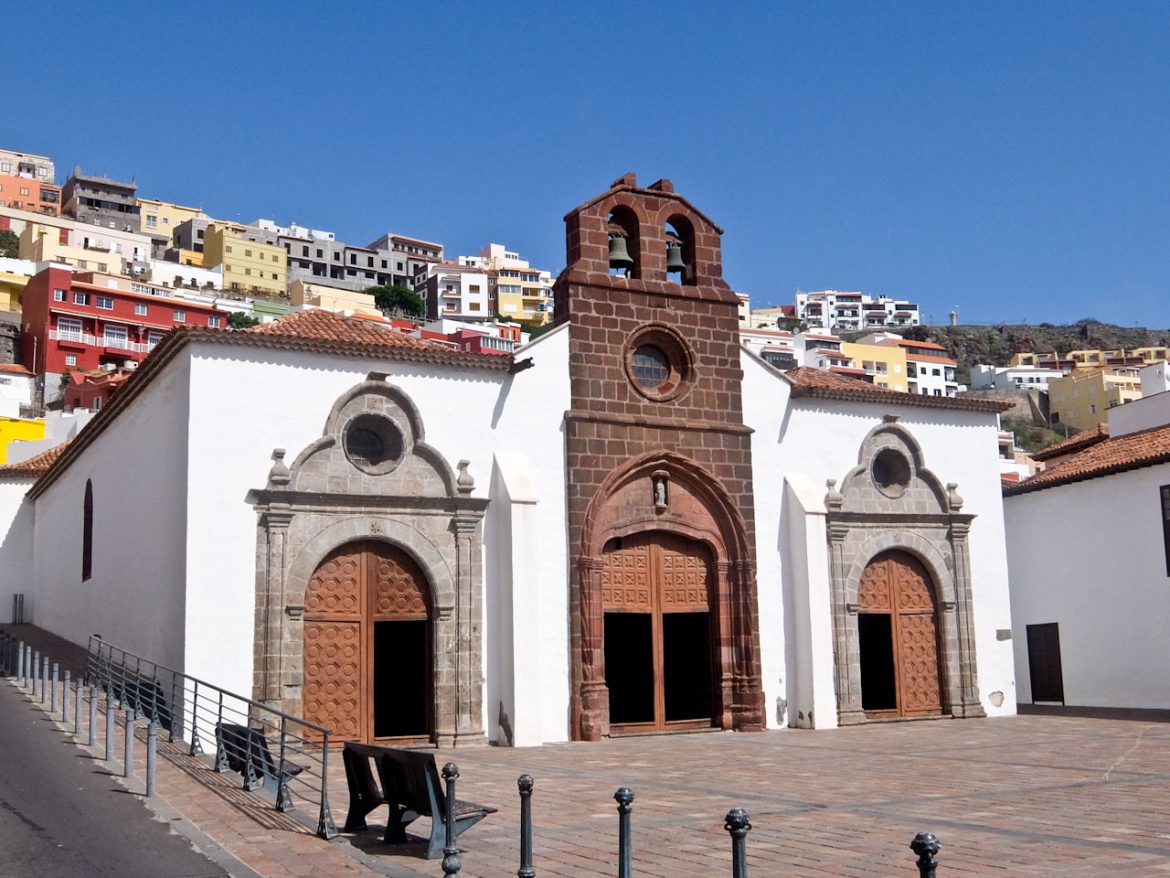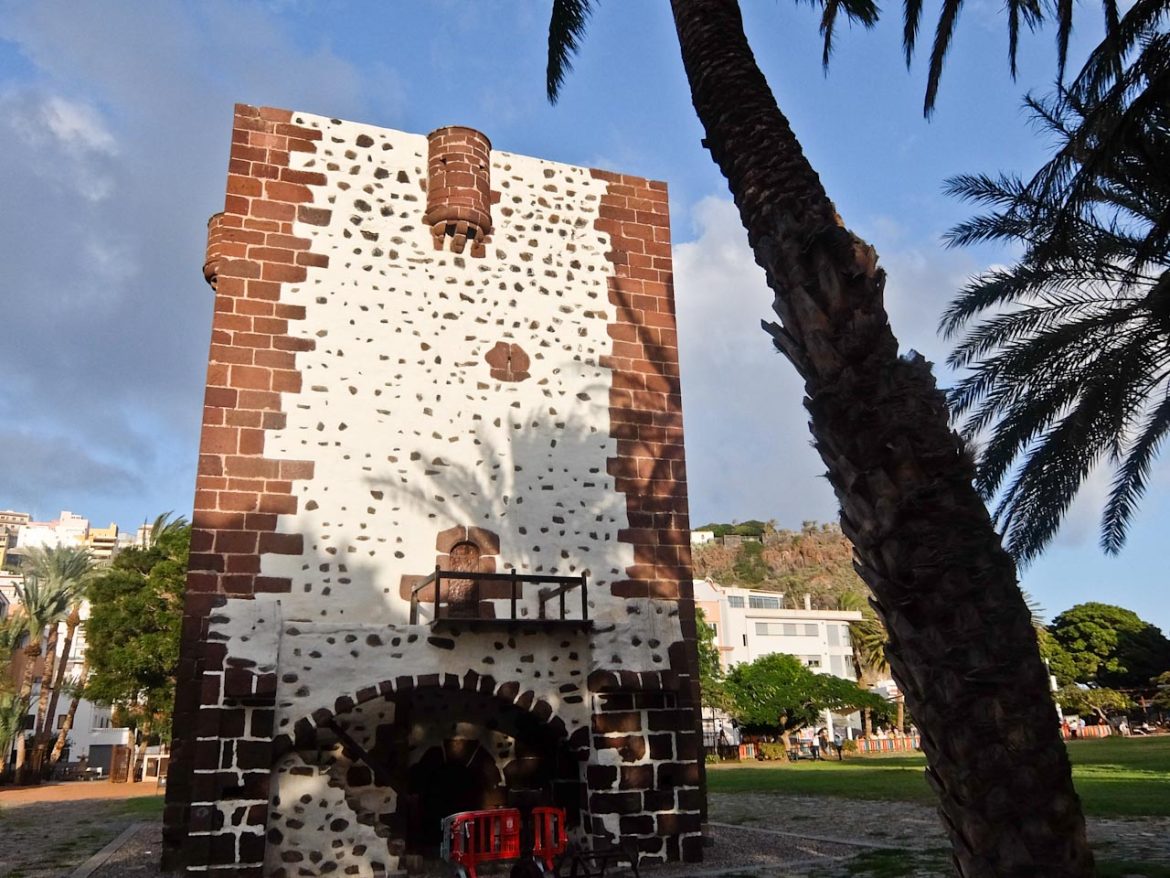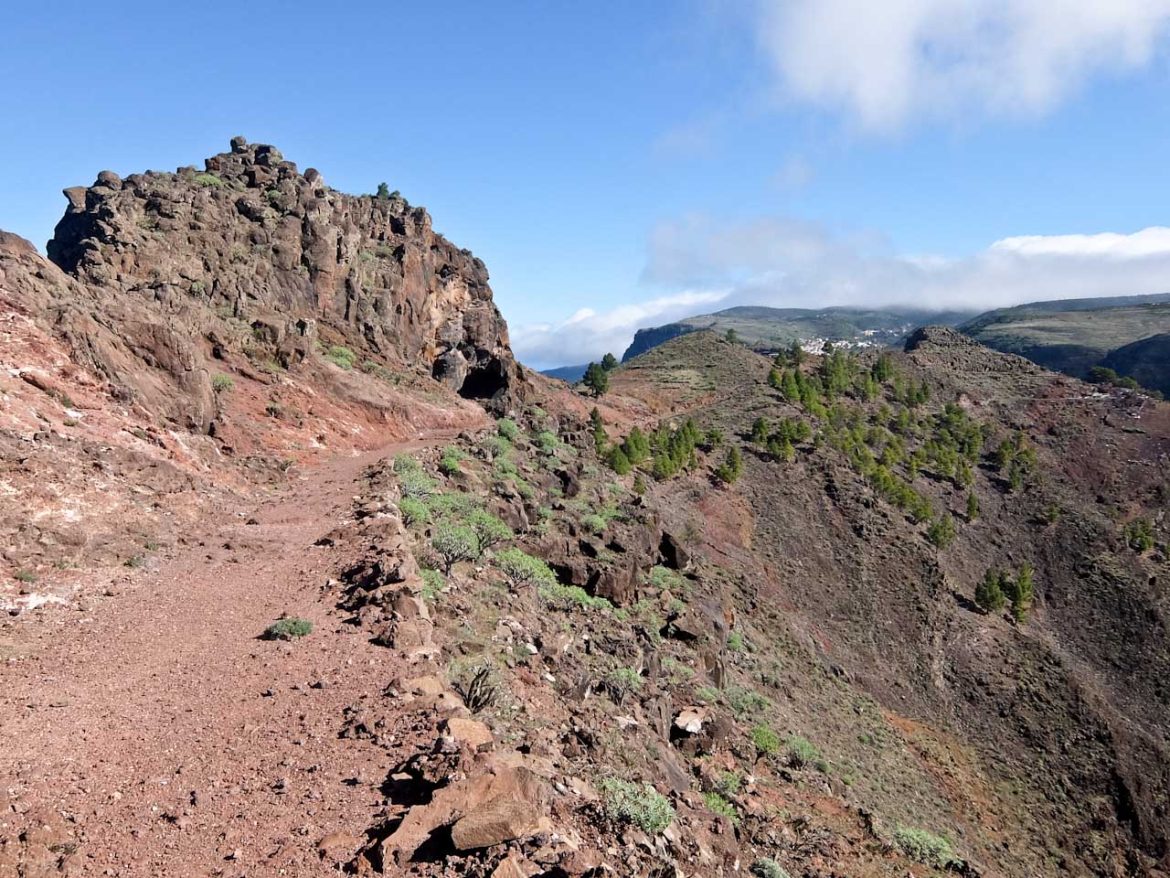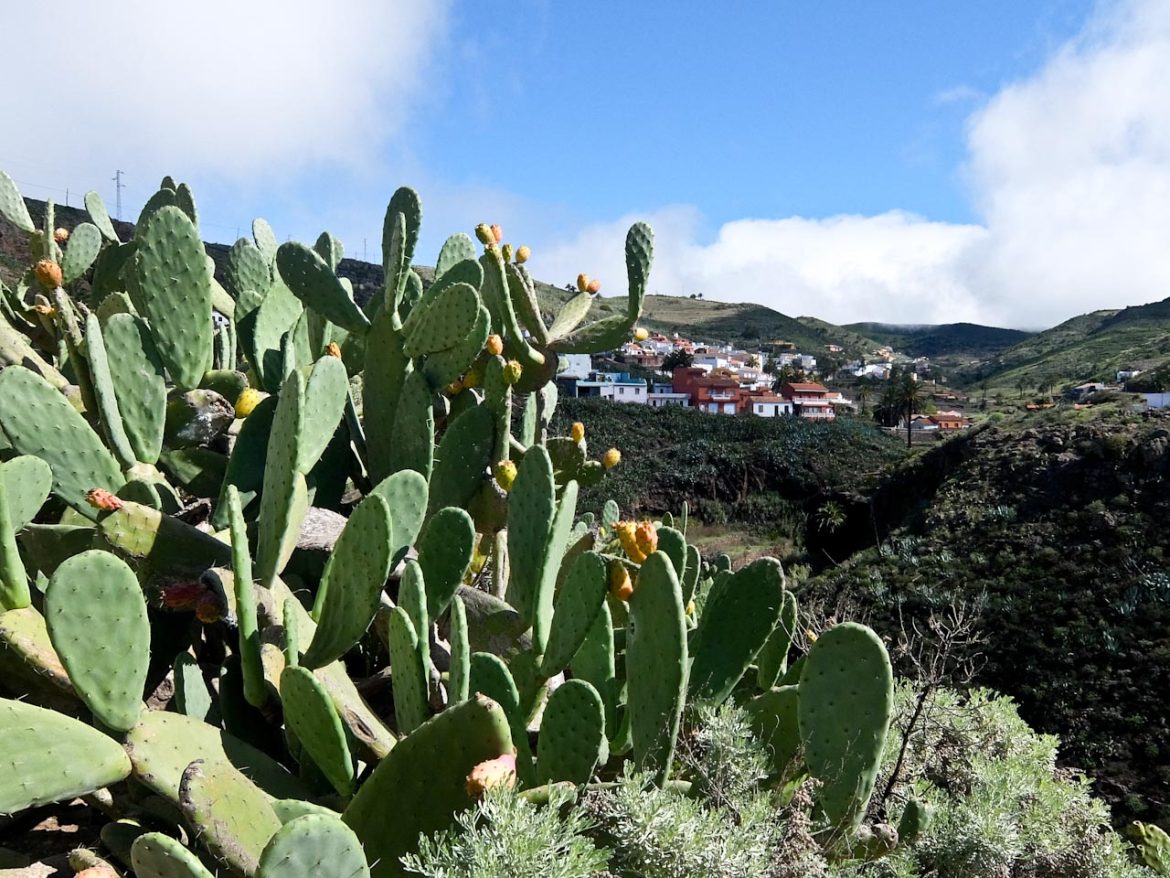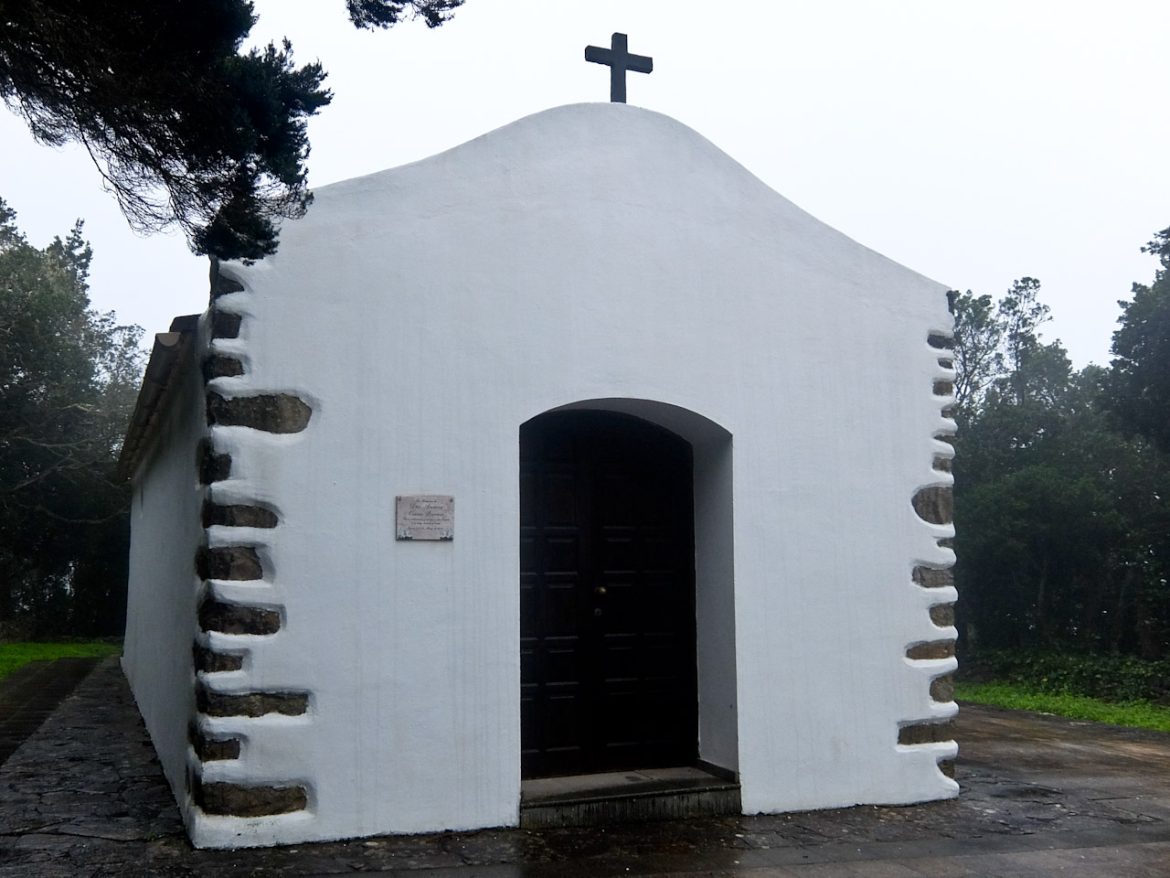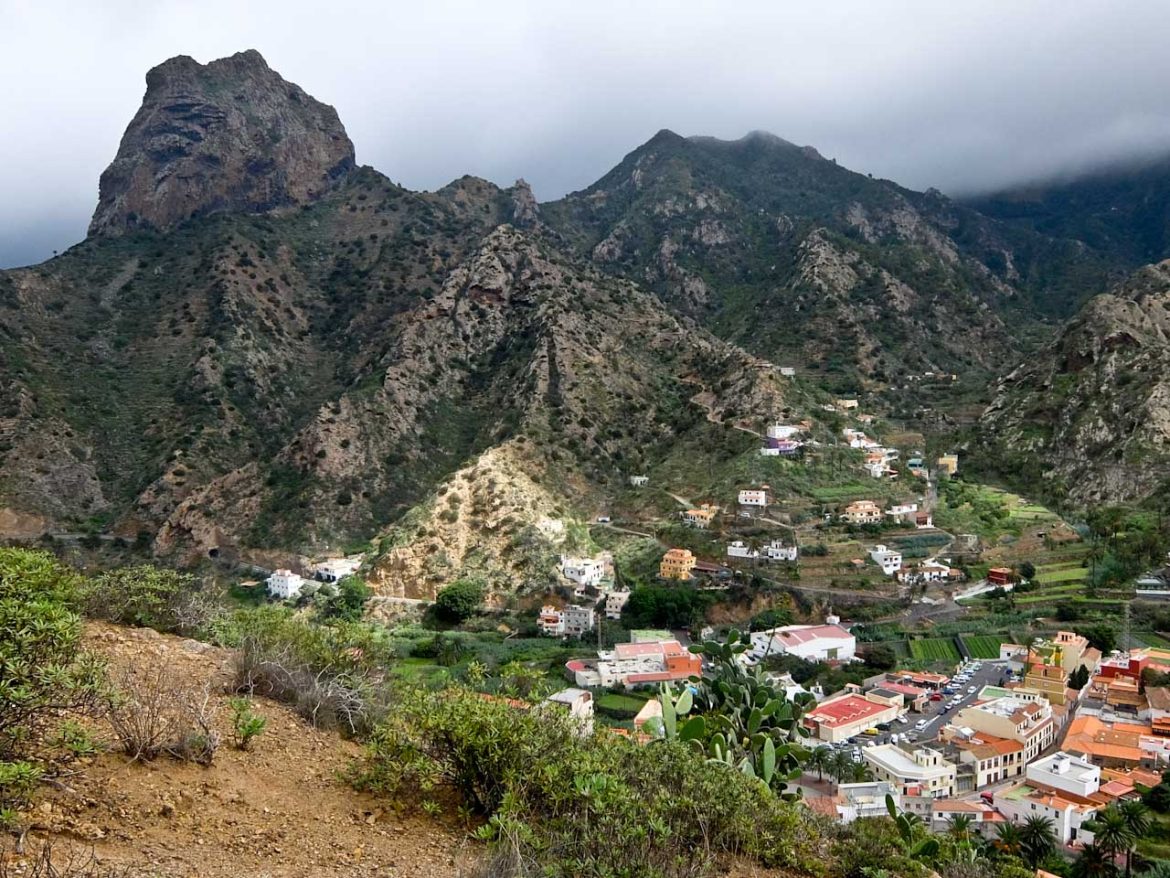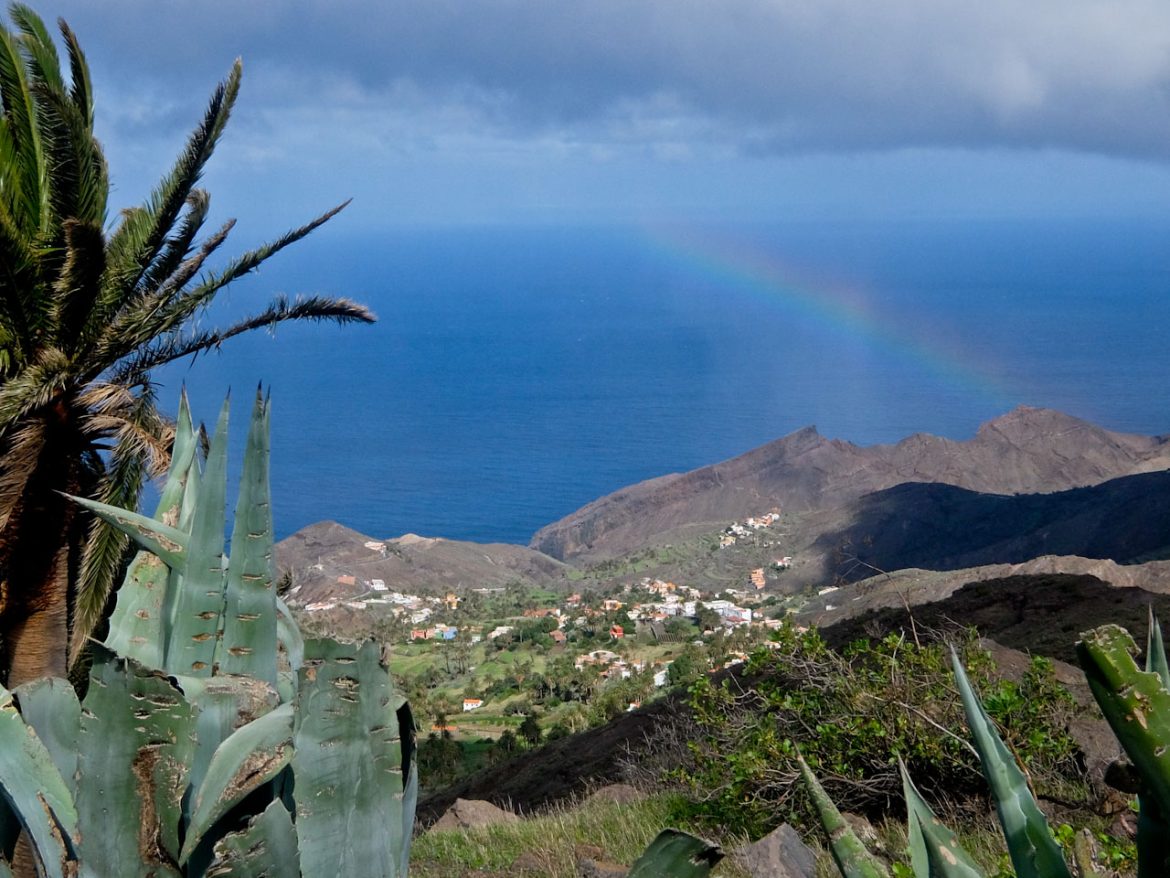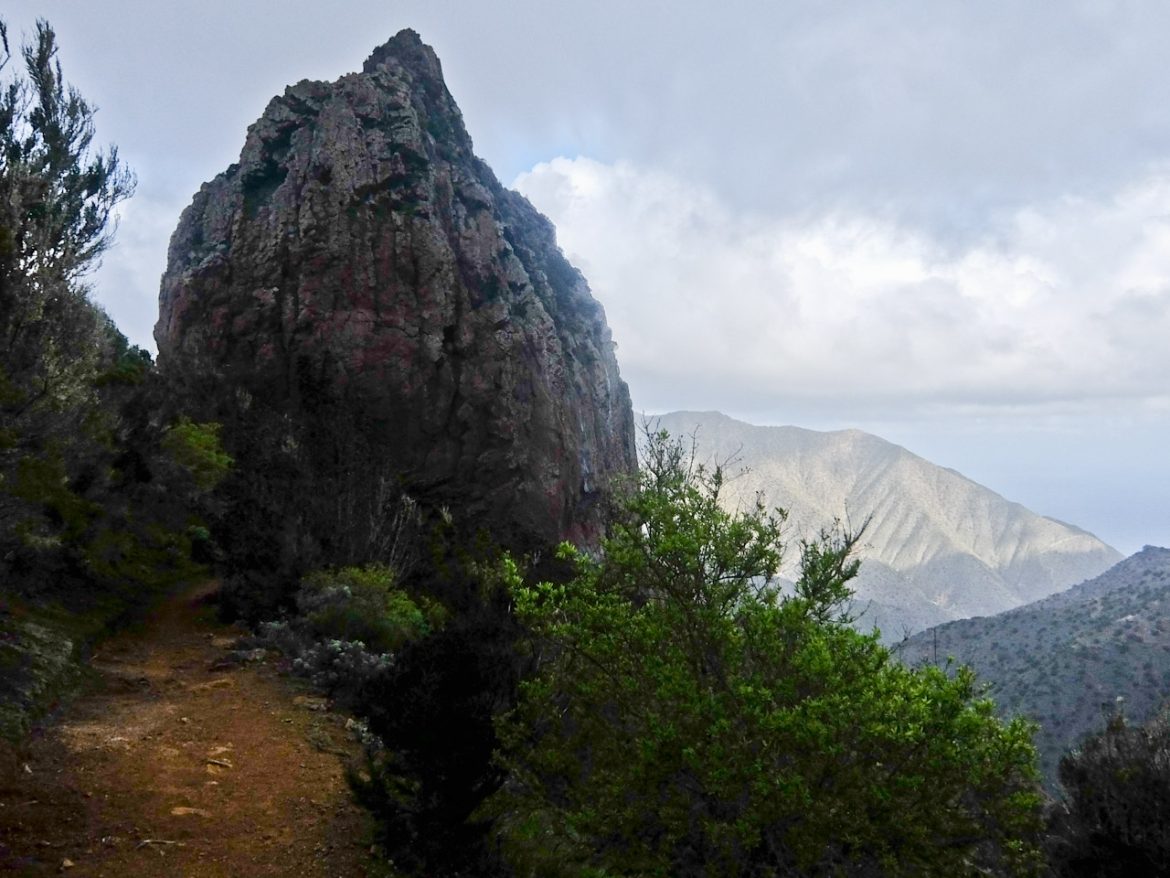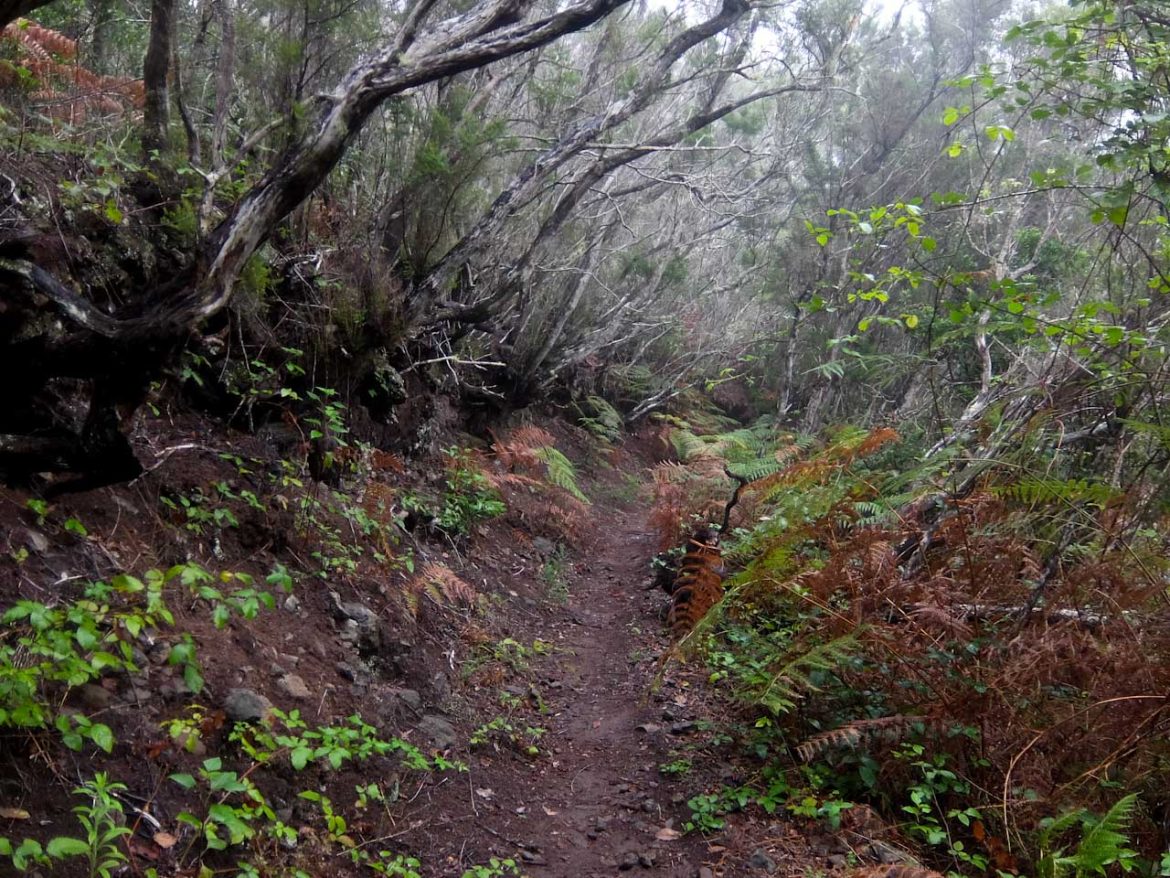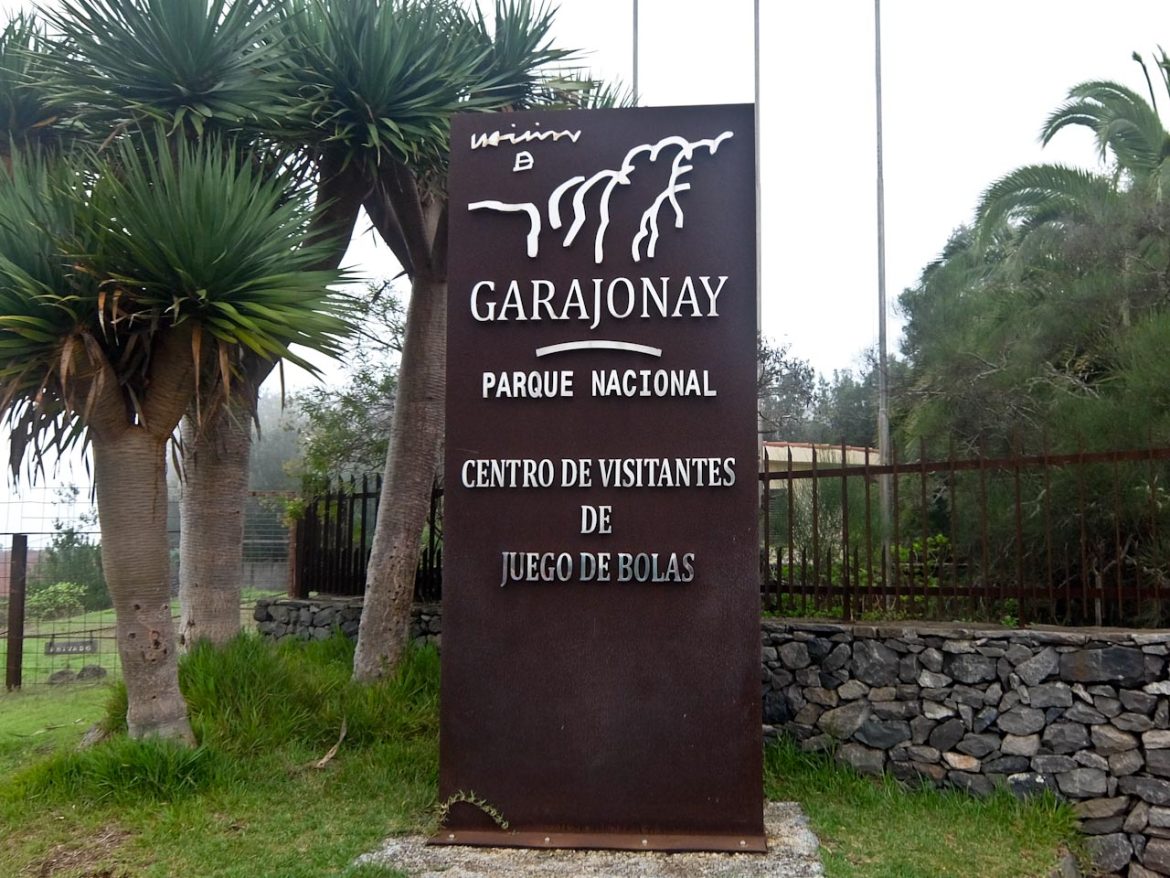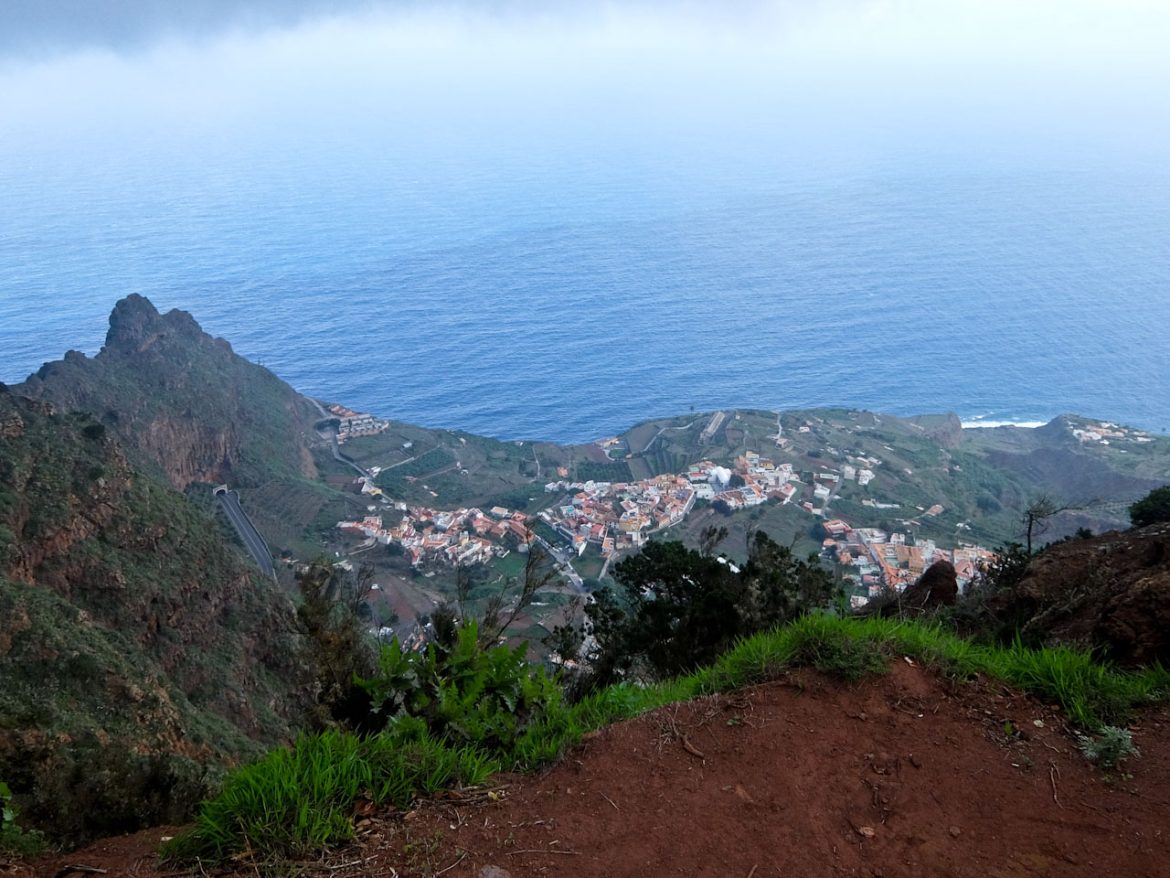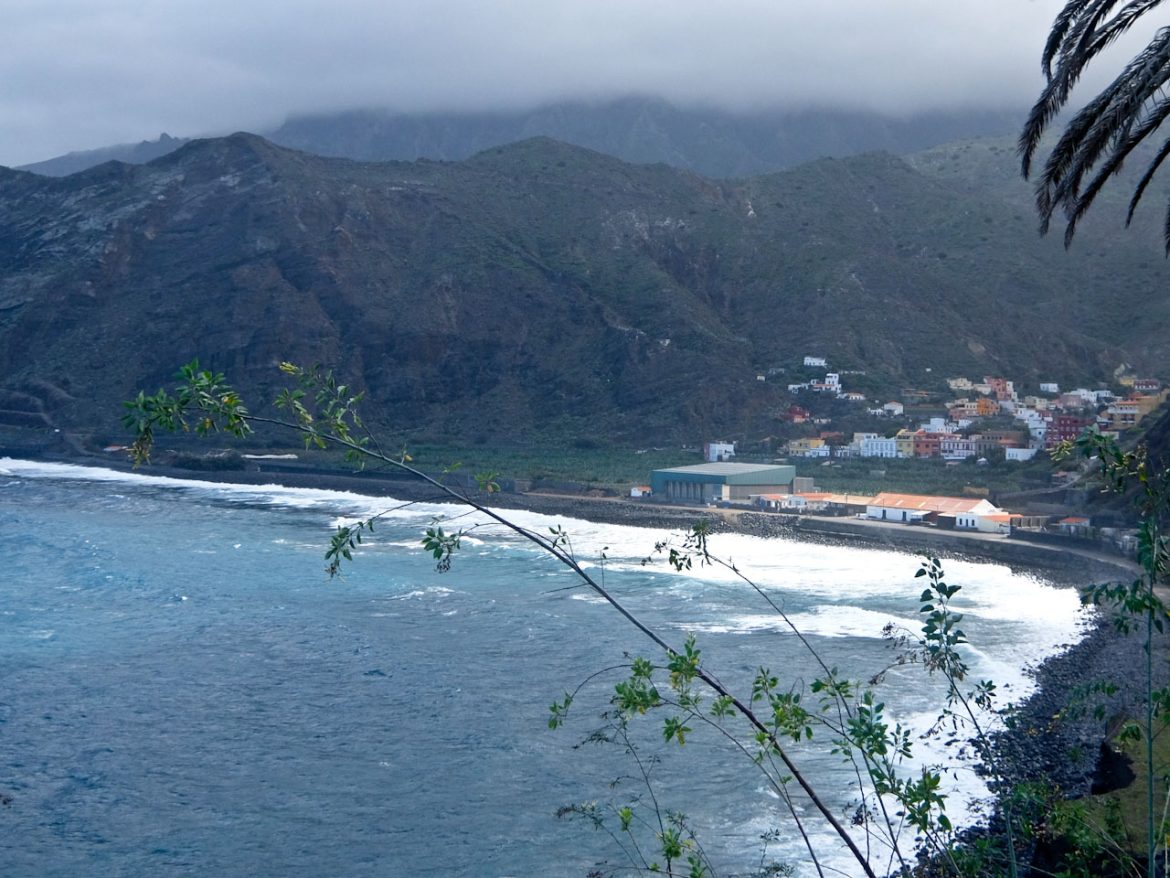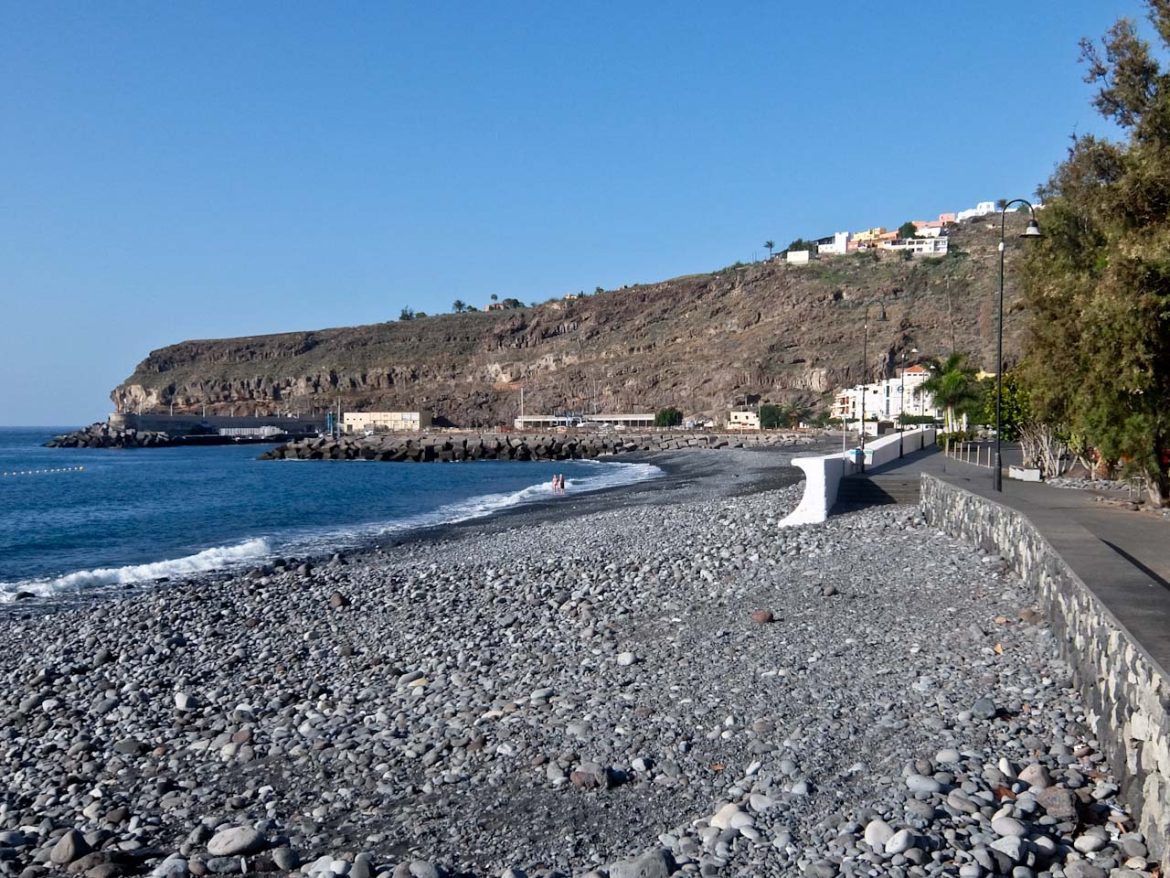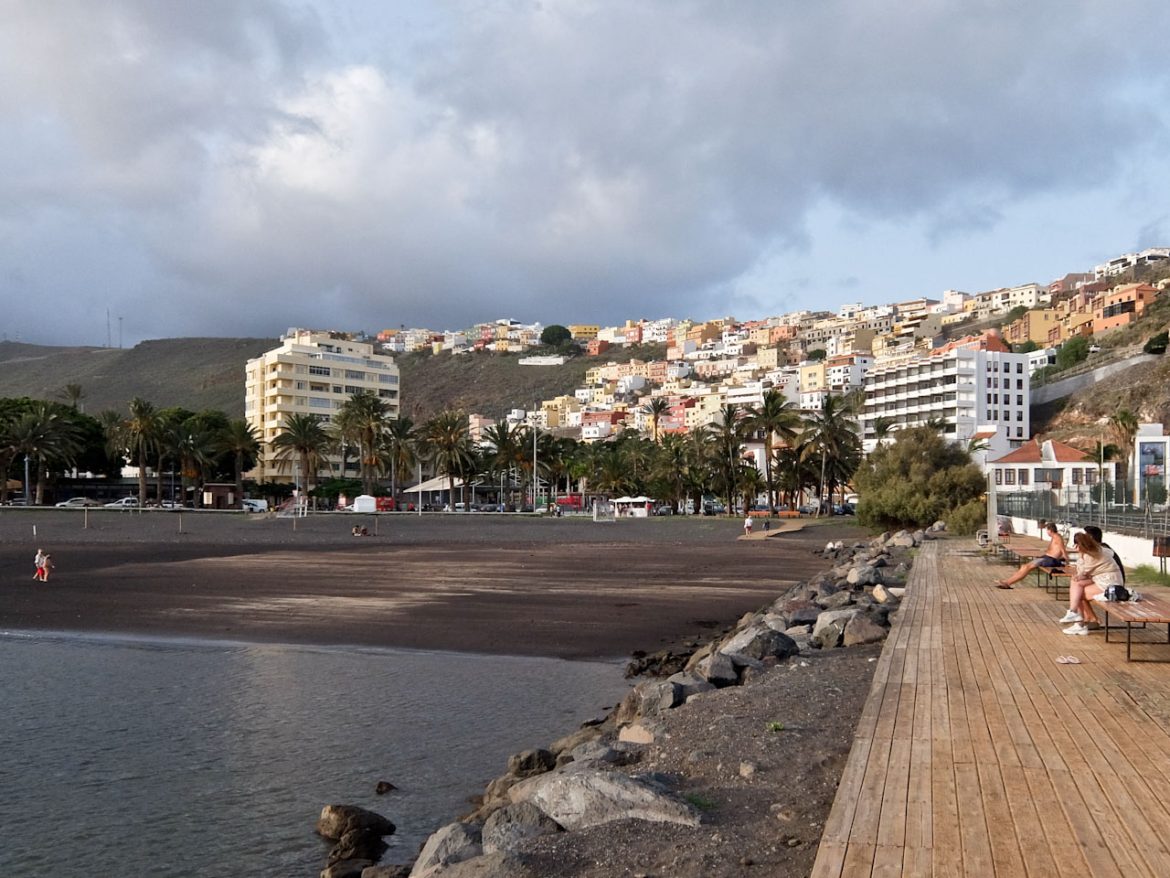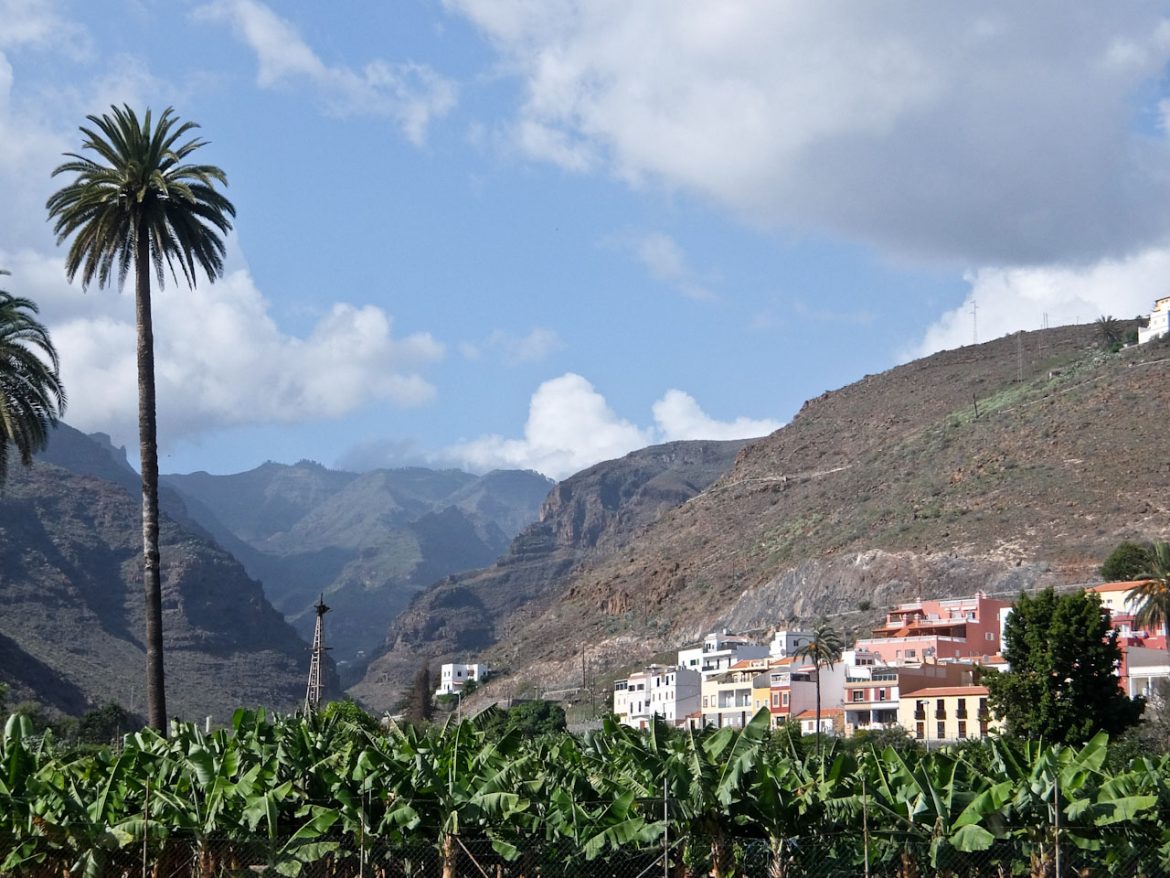One of the most unspoilt of the Canaries, and almost the smallest, the best way of exploring La Gomera is on foot.
A short ferry ride from Tenerife, La Gomera is basically a small circular lump of volcanic rock that sticks out of the sea, rising to a height of almost 1500m. A long distance walking trail, the GR132, circumnavigates the island crossing many steep-sided barrancos or canyons which cut into the coastline. The walking is rugged here and always involves a certain amount of ups and downs.
At various stages the trail climbs to the higher parts of the island, entering Laurisilva cloud forest, remnants of a much larger forest which once flourished all around the Mediterranean. It’s been designated as a protected area, the Parque Nacional de Garajonay, where you can experience this rare woodland for yourself.
I’m going to be walking around La Gomera for almost a week, starting in the capital San Sebastian and finishing in Playa de Santiago. I’ll be carrying a small back pack and staying in a different place every night. There are no roads around the coast, just well signposted walking trails, and this is the best way to get intimate with the island.
Day 1 Alto de Garajonay to Valle Gran Rey 15km 5.5 hours
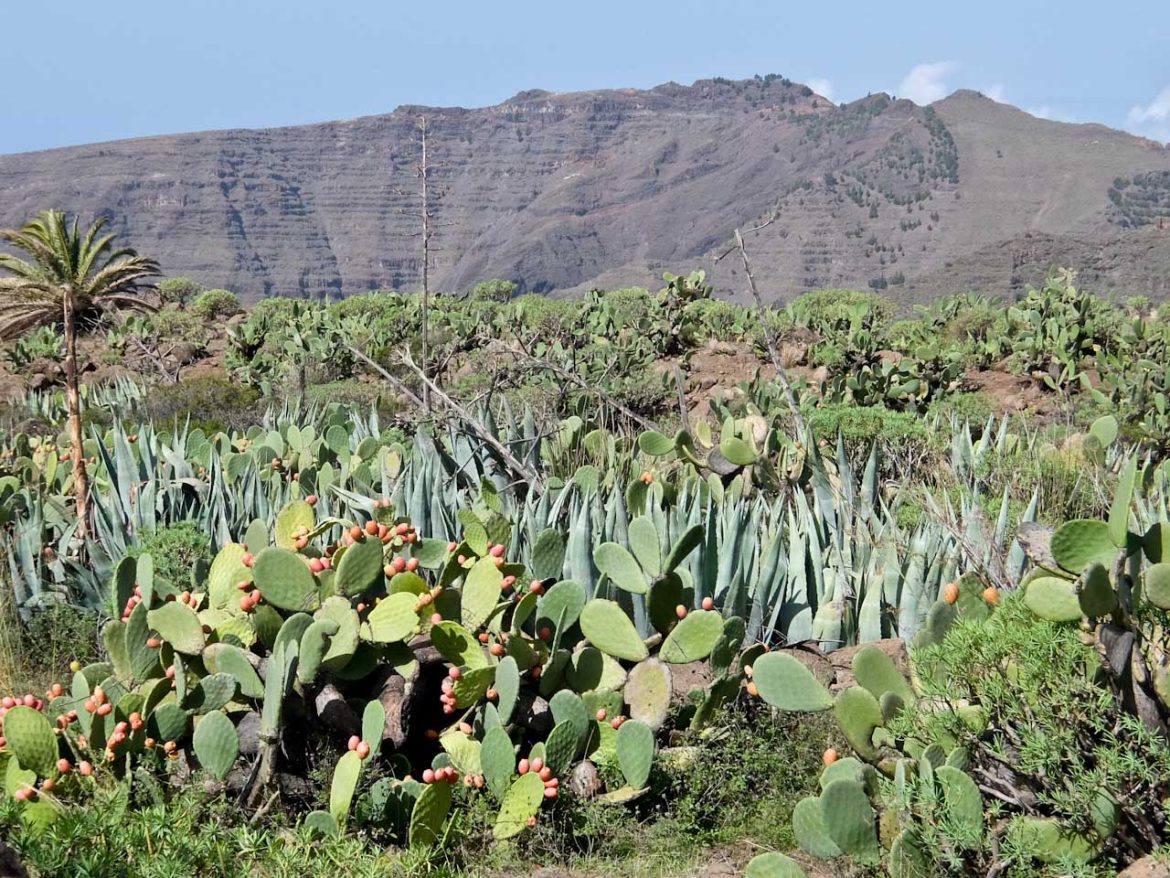
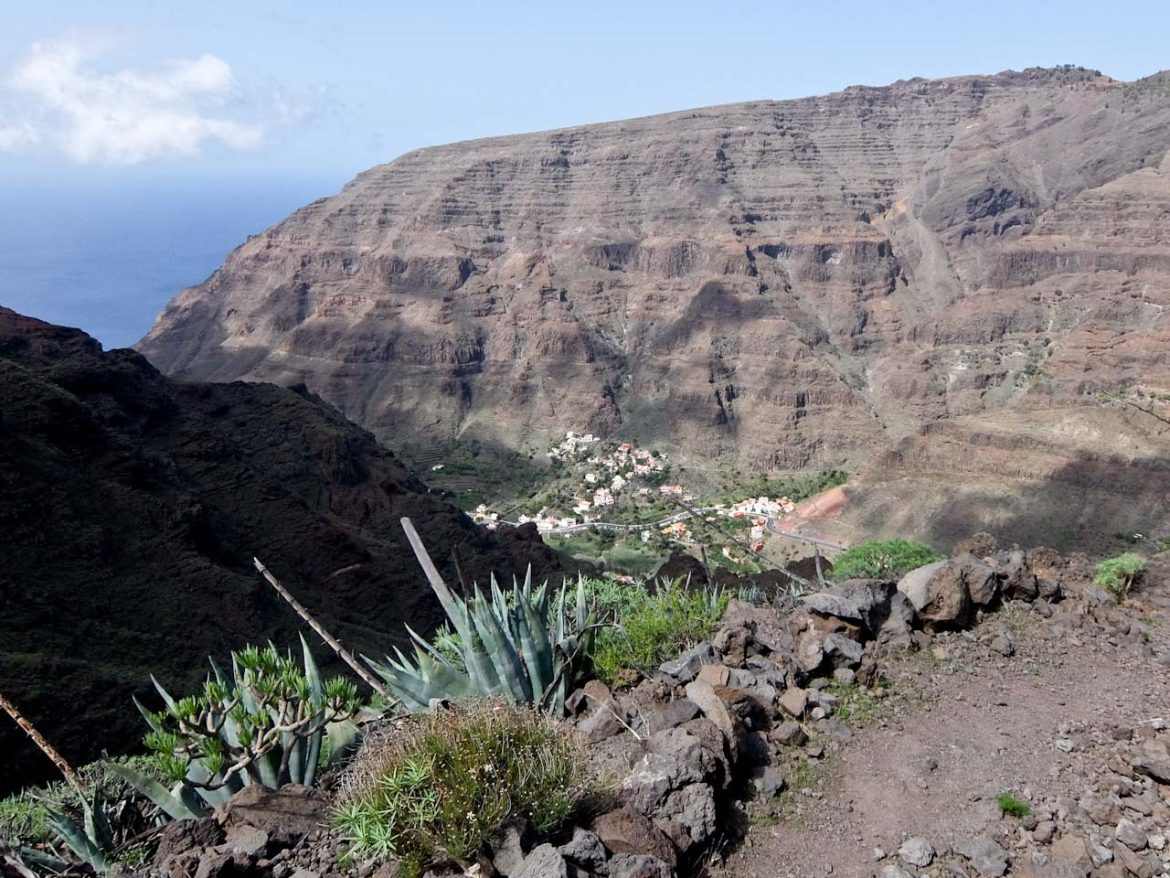
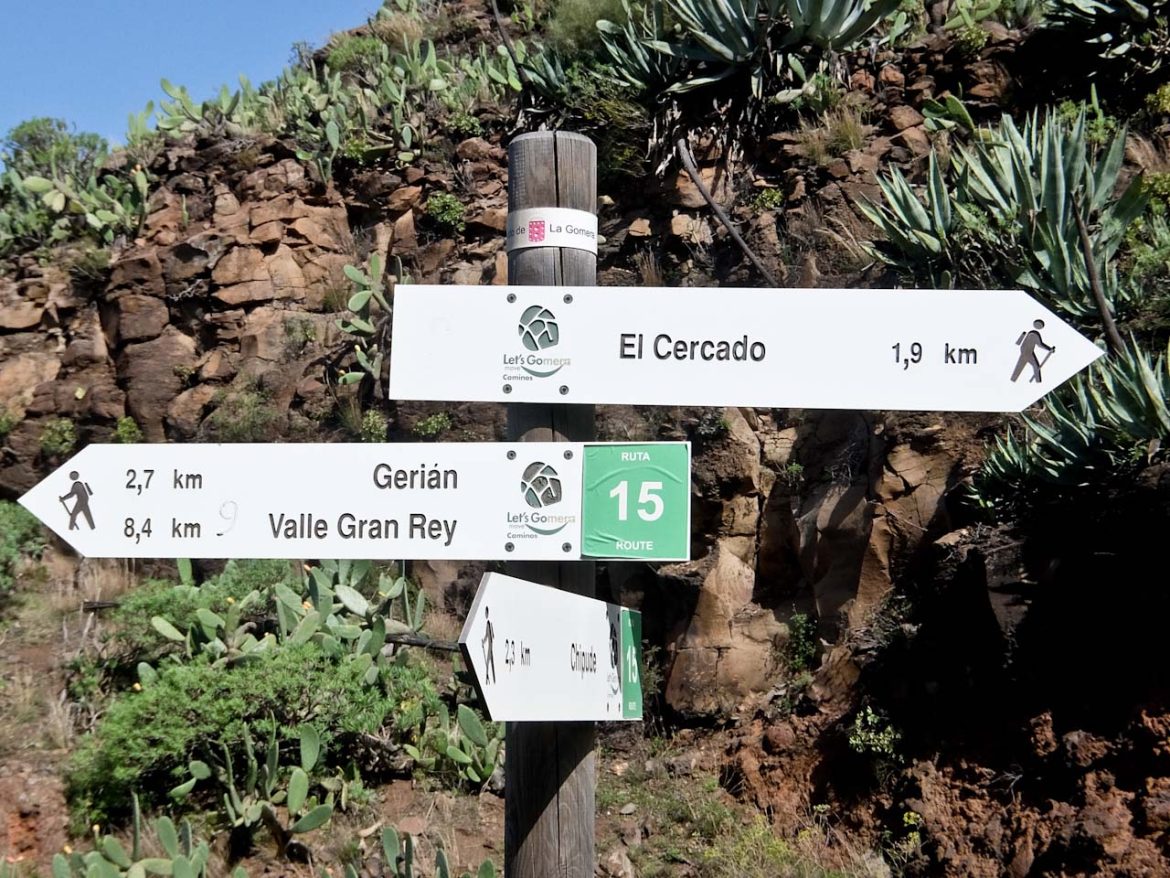
It makes sense to start at the highest point of the Island so, after taking a bus from San Sebastian to the Pajarito roundabout, I climb up the signposted path to the summit. Unfortunately, I’m already in the cloud so I miss the advertised stunning views. It’s then downhill following the signs to Chipude where I’m suddenly in bright sunshine. This is a small village with bars and restaurants but I press on, always descending.
For a while the path runs alongside an irrigation channel and then meets the GR132 for the first time. I’ll be following this for the next few days and it climbs up to the rocky gap of Degollada de los Bue. Here there are tremendous views of Valle Gran Rey and the sea. The paved track winds down, often steep but after crossing the barranco, reaches La Calera, my destination. I’ve made good time and there’s even a chance for a refreshing swim.
Day 2 Valle Gran Rey to Las Hayas 11km 4.5 hours
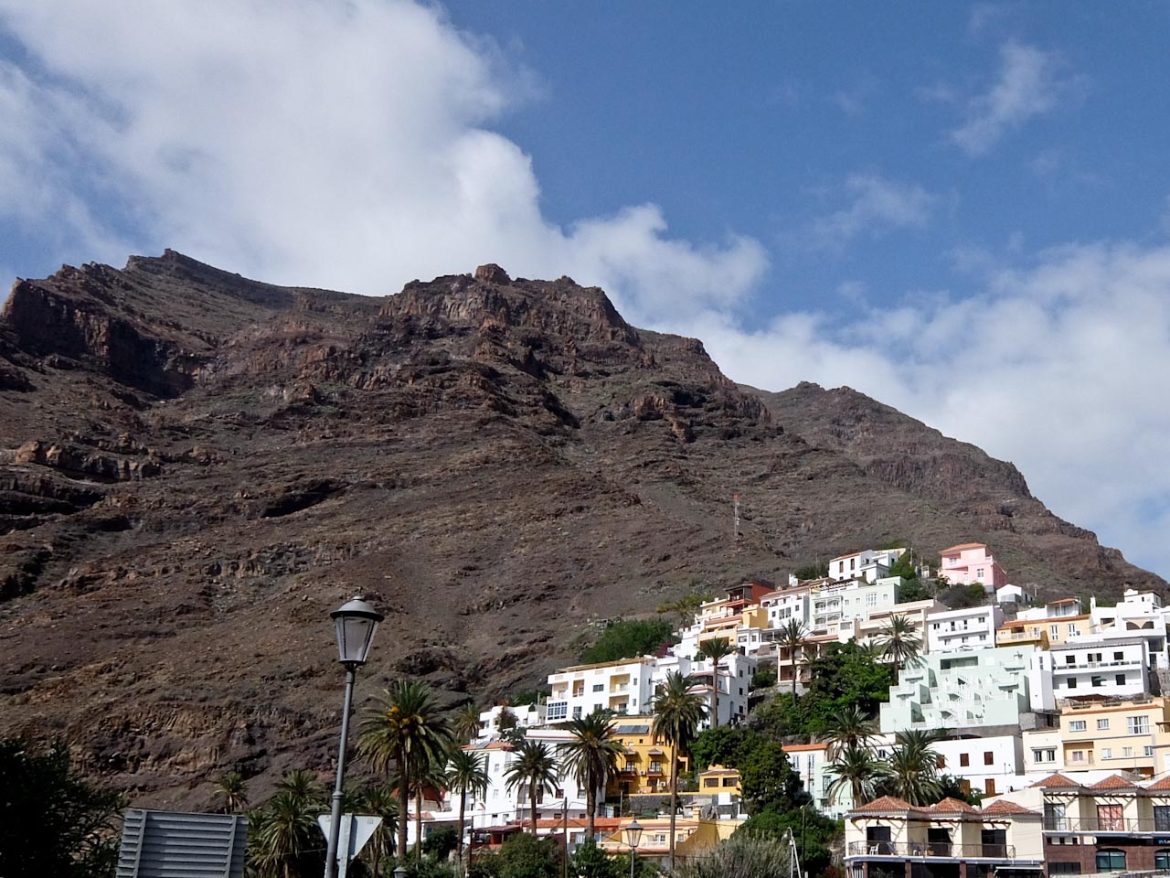
Another tough day ahead and it starts with a steady climb up to Roque Corno, the landmark overlooking Vallehermoso. I go round it and then enter Laurasilva forest, the trail moist and muddy underfoot. It drops down to a reservoir then climbs up to the Garajonay National Park visitor centre which has exhibitions on the flora and fauna of La Gomera
Unfortunately the normal path down to Agulo is closed because of a landslip so I take a steep vertiginous alternative. It zigzags directly across the cliff face, very hard on the knees, but eventually I’m down among the banana groves of Agulo. From here I drop down to the sea and follow the coast to Playa de Santa Catalina. A short road walk brings me to Hermigua.
Day 5 Hermigua to San Sebastian 18km 6.5 hours
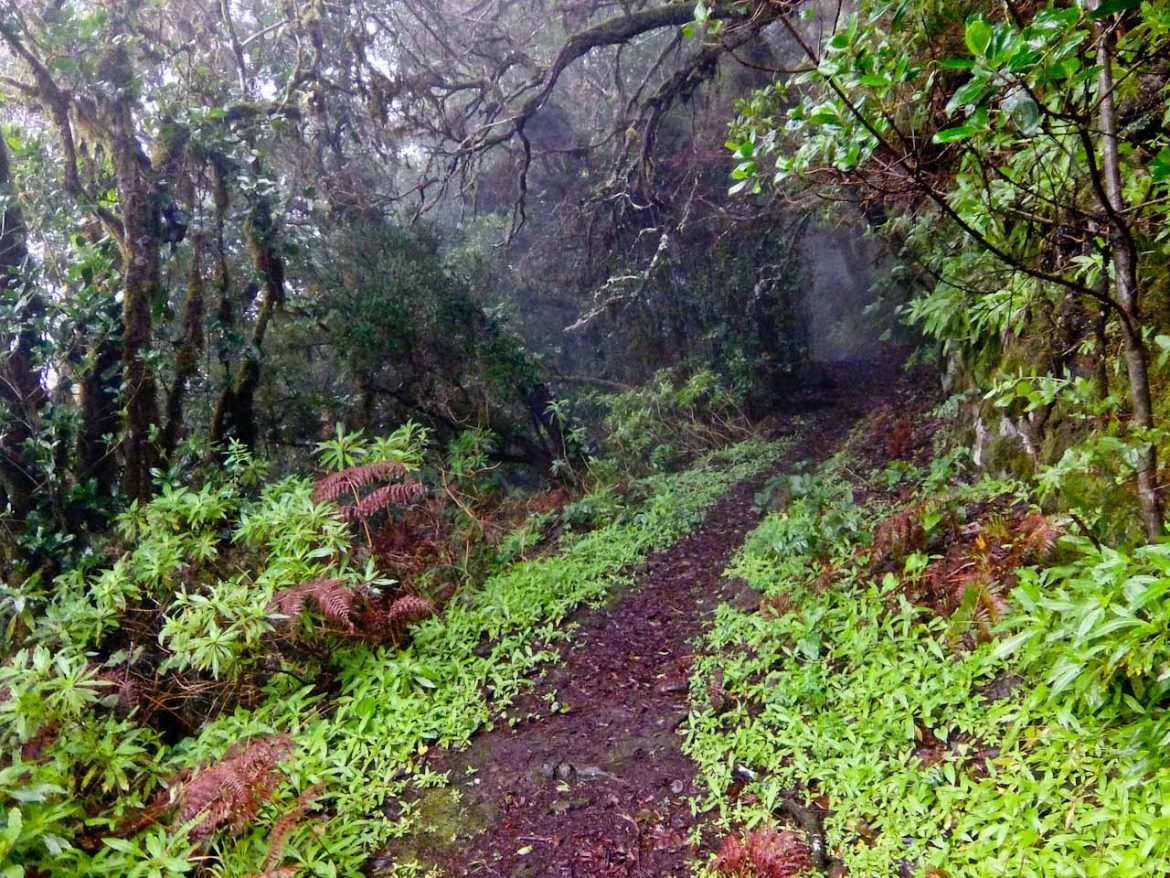
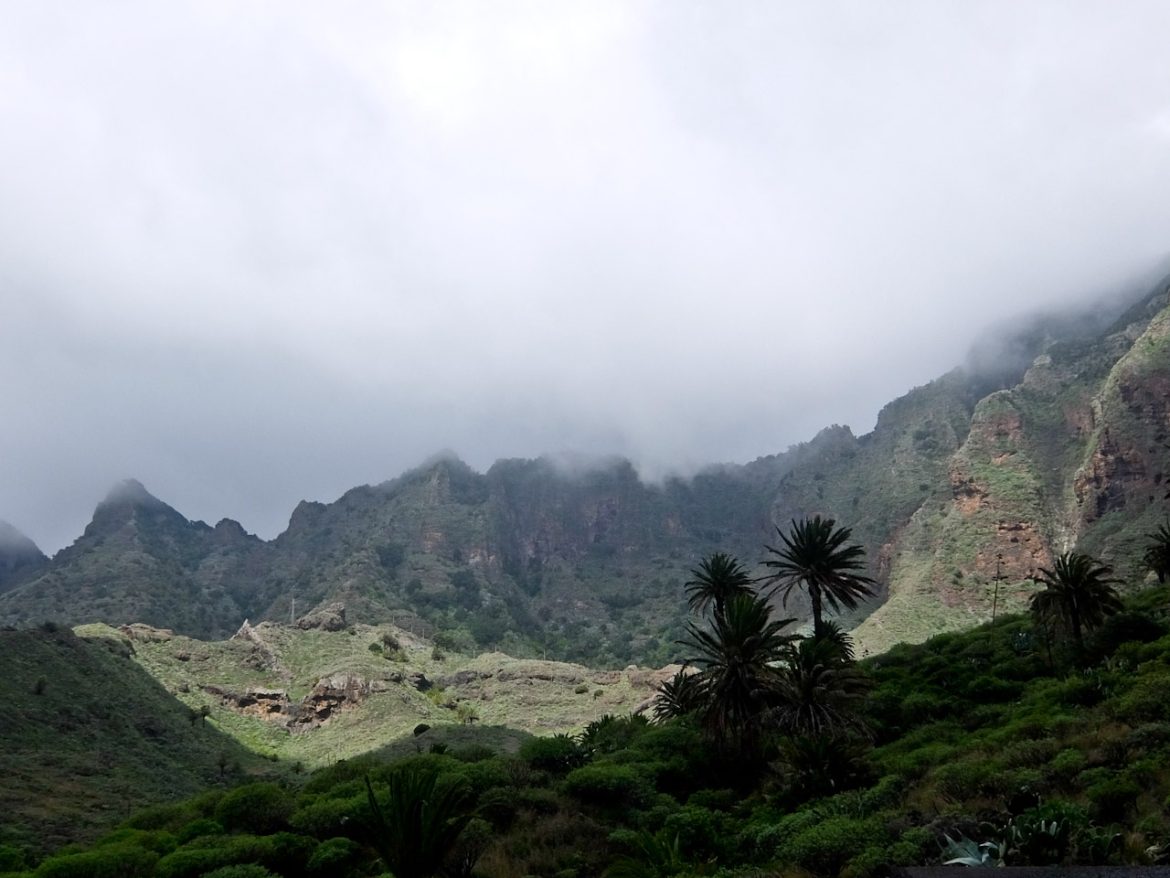
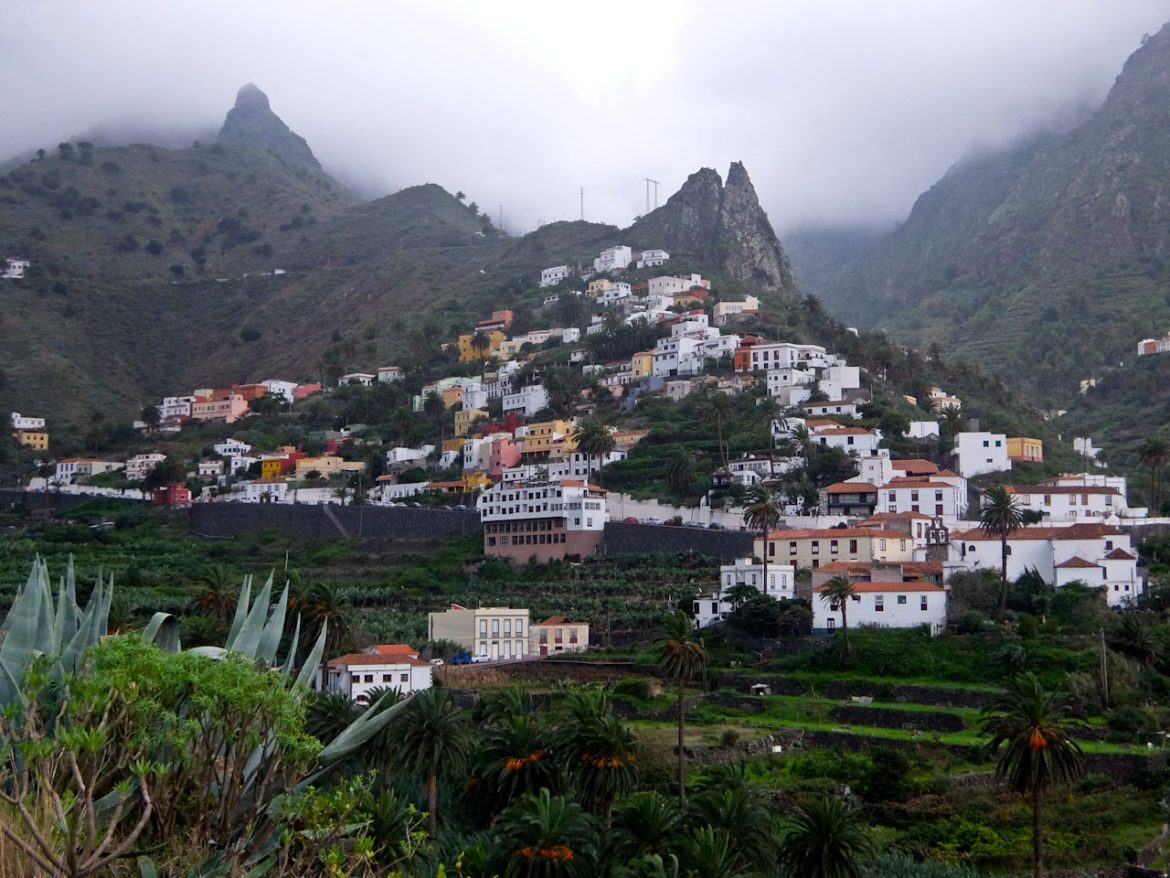
The day starts gradually climbing through banana plantations on the side of the valley. At 600m, I’m in a cloud and then leave the road and enter Laurasilva forest. The ascent is steep and the narrow path leads through trees covered in shaggy moss, slightly mysterious. At 850m I suddenly cross the watershed and look down into a long valley in the sunshine.
The path drops down, through cacti and agaves, to a road and then another path, the landscape becoming lush and green. Further down I meet the road again and I follow this all the way to San Sebastian, around 10 km. There’s little traffic and it takes me past attractive gardens and small hamlets before reaching the outskirts of the capital.
Day 6 San Sebastian to Playa de Santiago 21km 7.5 hours
I’ve deliberately saved the toughest day until the last, a coastal path crossing a multitude of barrancos. There are a lot of ups and downs today but the sea is always with me. After an hour, I reach the first beach, Playa de la Guancha and then zigzag upwards. Then it’s down to the next beach, Playa del Cabrito, a former banana plantation now a hotel.
More switchbacks lead upwards to a ridge and then climb to the abandoned settlement of Morales. Then it’s a leisurely descent down past Contreras, another abandoned house, with Playa de Santiago tantalisingly in the distance. Unfortunately there are three more barrancos to cross before I finally reach the Hotel Jardin Tecina. This is a luxurious establishment where I sink into the swimming pool and sooth my aching limbs.
Fact file
FLY: There are no direct flights to La Gomera, instead Ryanair flies from Stansted to Gran Canaria and then Binter Canarias takes you to the island. Another alternative is to fly to Tenerife South and take a ferry.
INFO: La Gomera Travel has information about the island.
STAY: San Sebastian: Hotel Torre del Conde
Valle Gran Rey: Hotel Jardín Concha
Las Hayas: Casa Amparo.
Vallehermoso: Hotel Añaterve
Hermigua: Hotel Escuela Rural Casa de Los Herrera
Playa de Santiago: Hotel Jardin Tecina
GUIDE: Cicerone’s Walking on La Gomera and El Hierro is an indispensable companion.


